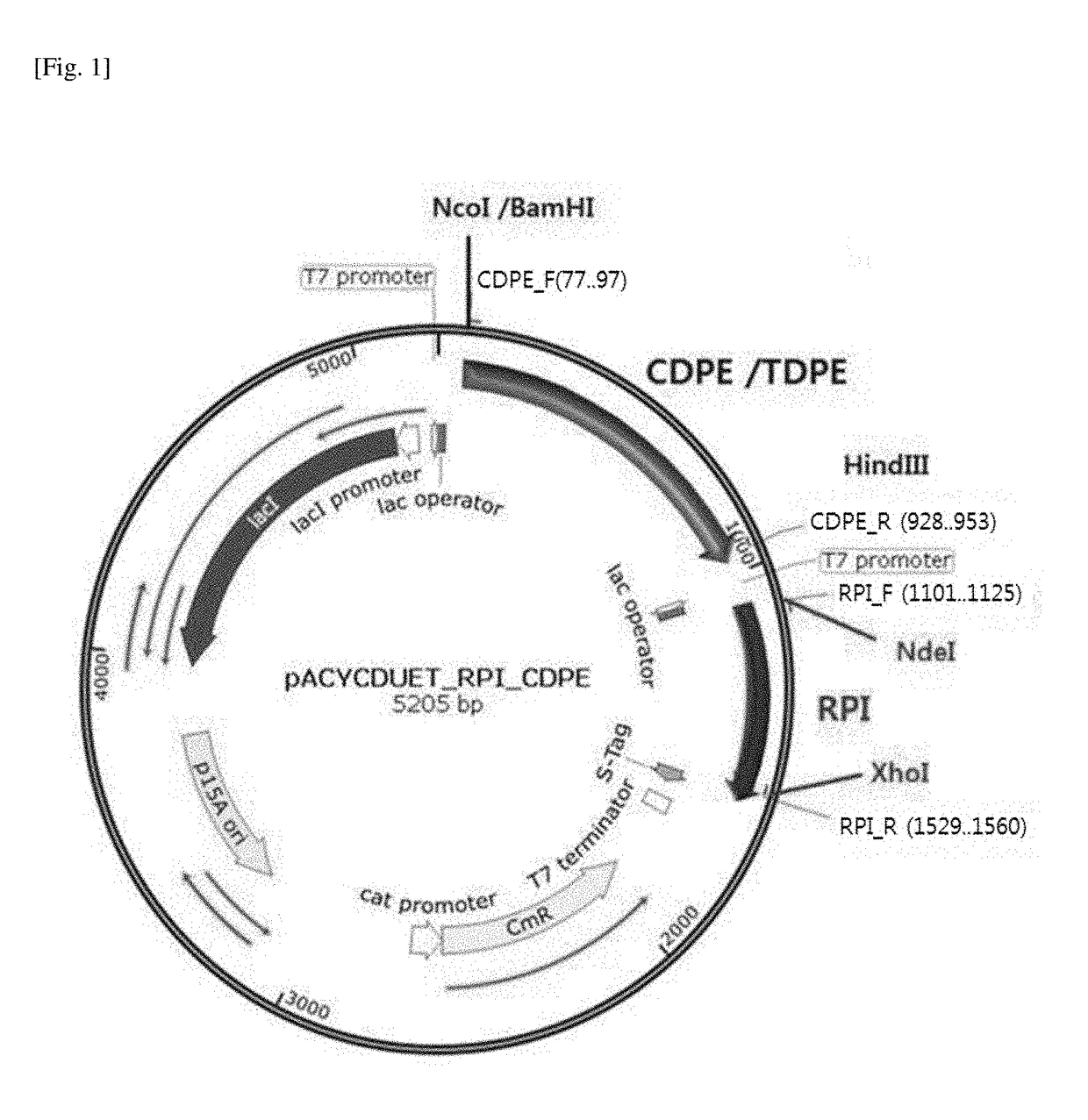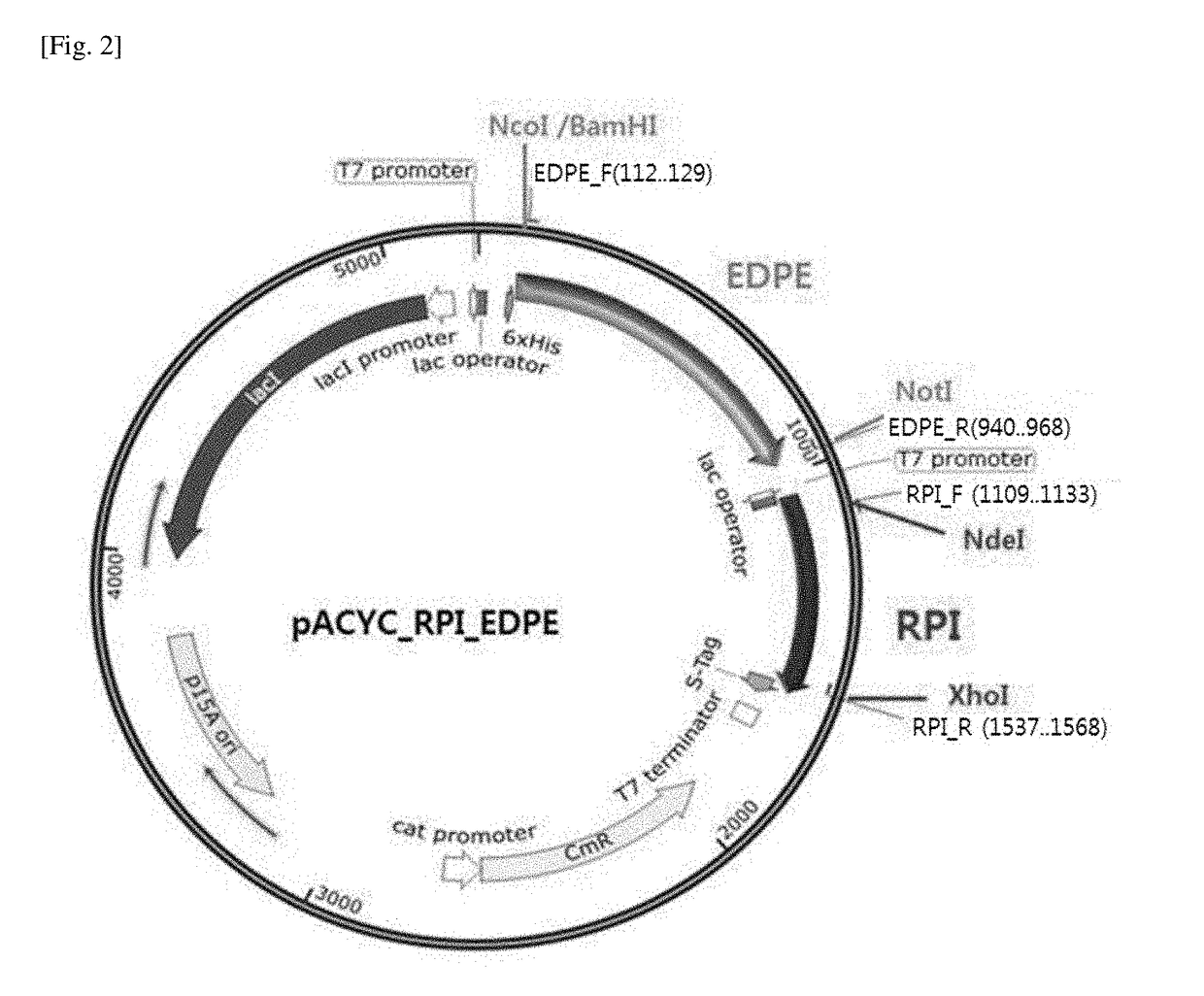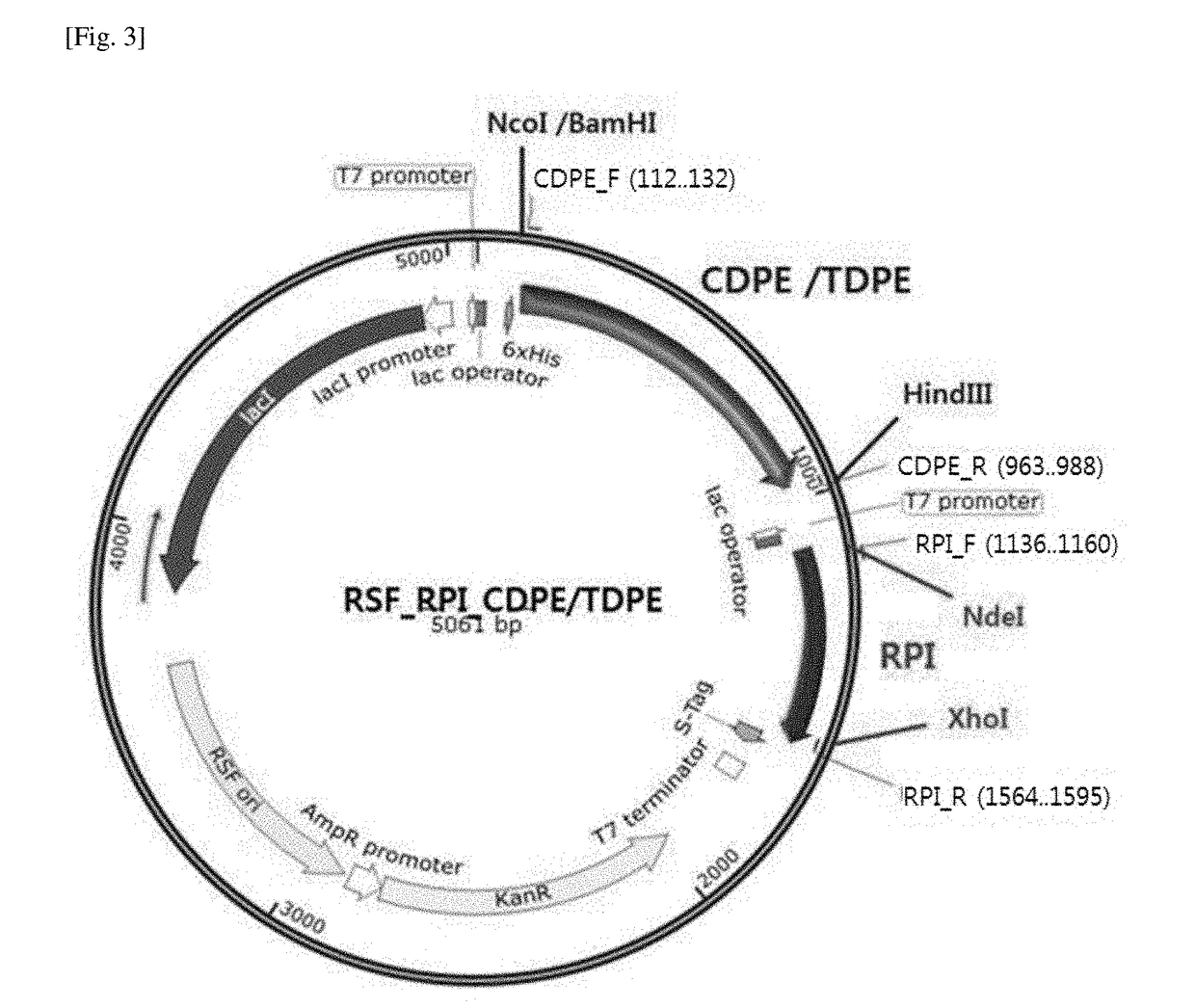Strain ptoducing allose from fructose and method for producing allose using same
a technology of fructose and allose, which is applied in the direction of peptides, enzyme stabilisation, racemaces/epimerases, etc., can solve the problems of large amount of altrose (d-altrose) and weak enzymes, and achieve high yield and thermal stability. high
- Summary
- Abstract
- Description
- Claims
- Application Information
AI Technical Summary
Benefits of technology
Problems solved by technology
Method used
Image
Examples
example 1
on of Duet Plasmid and Transformation
[0094]Plasmids for expressing enzyme for producing a psicose from a fructose, CDPE, EDPE, or TDPE each, in one strain, with RPI enzyme for producing an allose from a psicose was constructed through gene recombination.
[0095]Specifically, in order to prepare a vector introducing a sequence encoding RPI, a recombinant vector was prepared by inserting the polynucleotide encoding the amino acid sequence of SEQ ID NO: 4 which was a RPI protein (SEQ ID NO; 11) into a same restriction enzyme stie of pACYC (NOVAGEN) or RSF (NOVAGEN) which was an expression vector using NdeI and XhoI(NEB).
[0096]Then, to prepare a vector introducing a sequence encoding the psicose epimerase, a sequence encoding psicose epimerase was prepared first.
[0097]Specifically, as the polynucleotide encoding the amino acid sequence of SEQ ID NO: 1 derived from Clostridiuim scindens (Gene bank: EDS06411.1), polynucleotide encoding the amino acid sequence of SEQ ID NO: 2 derived from En...
example 2
ment of Reaction Condition of Allose Producing Strain
[0101]2-1. Analysis of Cell Reaction Activity by Temperature
[0102]To confirm the optimum temperature for producing an allose, reaction was done for 2 hours under 60° C., in 5 mg / ml_DCW range of microbial cell concentration of strain isolated in Example 2, in a 10% (v / v) fructose 1 ml, 50 mM PIPES buffer (pH 7.0) solution, and after finishing (stopping) the reaction by heating to stop the substrate reaction, the temperature showing the maximum activity was measured. Then, the allose conversion rate from a fructose for 2 hours was measured, thereby showing the relative value of allose conversion rate at each temperature (RA (%) that is Y axis value of figure) when the allose conversion rate at the optimum temperature was taken as 100%. The result was shown in the following Table 7 and FIGS. 5 to 7.
Conversion rate (%)=(production / amount of substrate added)*100
Amount of substrate added=residual fructose+amount of psicose remained+allo...
example 3
oduction
[0116]3-1. Allose Production Reaction from 15% (v / v) Fructose
[0117]To confirm the allose production from a fructose, the allose conversion rate was measured through the following formula by sampling by time as reacting for 0 to 20 hours at 50° C. temperature in 5 mg / ml_DCW range of microbial cell concentration of strais isolated from Example 2, in 15% (v / v) fructose 1 ml as a substrate and 50 mM PIPES buffer solution (pH 7.0 or 8.0, performing at the optimum pH of each enzyme). The result was shown in Table 12 and FIG. 17.
Conversion rate (%)=(Production / amount of substrate added)*100
Amount of substrate added=residual fructose+amount of psicose remained+allose production [Formula]
TABLE 12Allose conversionPsicose conversionEnzymerate (%)Rate (%)RSF_CDPE_RPI (Histag X)11.324.9RSF_TDPE_RPI (Histag X)12.025.3RSF_EDPE_RPI (Histag X)12.625.3RSF_CDPE_RPI (Histag ◯)13.024.8RSF_TDPE_RPI (Histag ◯)11.525.3RSF_EDPE_RPI (Histag ◯)12.924.9ACYC_CDPE_RPI (Histag X)11.825.9ACYC_TDPE_RPI (Hi...
PUM
| Property | Measurement | Unit |
|---|---|---|
| temperature | aaaaa | aaaaa |
| temperature | aaaaa | aaaaa |
| molecular weight | aaaaa | aaaaa |
Abstract
Description
Claims
Application Information
 Login to View More
Login to View More - R&D
- Intellectual Property
- Life Sciences
- Materials
- Tech Scout
- Unparalleled Data Quality
- Higher Quality Content
- 60% Fewer Hallucinations
Browse by: Latest US Patents, China's latest patents, Technical Efficacy Thesaurus, Application Domain, Technology Topic, Popular Technical Reports.
© 2025 PatSnap. All rights reserved.Legal|Privacy policy|Modern Slavery Act Transparency Statement|Sitemap|About US| Contact US: help@patsnap.com



